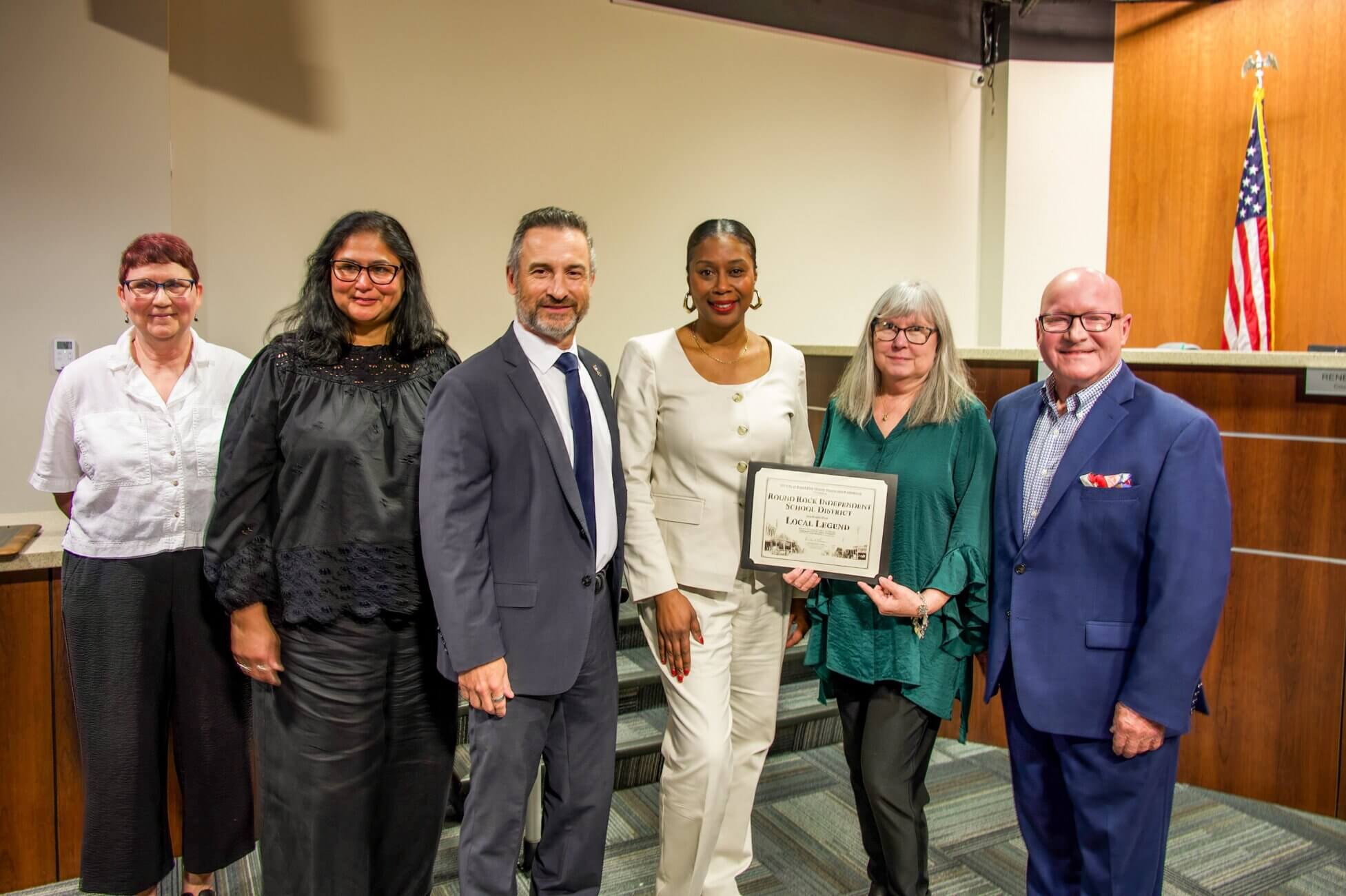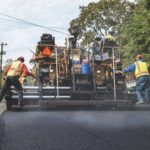The City of Round Rock Historic Preservation Commission announced this year’s Local Legend Award honorees at the Round Rock City Council meeting on Thursday, Nov. 6.
Rev. Dr. A.W. Anthony Mays and Round Rock Independent School District were recognized for their contributions to Round Rock’s history.
The Local Legend Awards program was established in 1990 to recognize people, businesses, groups, publications or institutions that have had a lasting impact on the culture, development and history of Round Rock.
Round Rock Local Legend selections must have a direct connection to the founding of Round Rock or assist in the telling of its story, with an emphasis on historic preservation and education of the public.
Local Legends are recognized for:
- Importance to the city’s founding or growth;
- Association with an historic place or event;
- Impact of service to the community’s history, development or culture;
- Achievements that have brought honor and distinction to Round Rock.
Applications are accepted year round — more information can be found at roundrocktexas.gov/locallegends.
This historic preservation program is intended to share informative stories about Round Rock’s culture so that the public understands how the past shaped what Round Rock is today.
Historic Preservation Commission members Richard Parson and Sharon Whitaker presented the awards and highlighted some of the accomplishments of each of the award recipients.
Rev. Dr. A.W. Anthony Mays
The first African-American student to attend Round Rock High School, A.W. Anthony Mays went on to become pastor of one of the largest historically Black churches in Central Texas for more than three decades.
Mays grew up in Round Rock, along with his brother Charles, raised by their grandmother. Attending the segregated Hope Well Colored School through ninth grade, he took up the option of transferring to all-white Round Rock High upon the opening of the school to desegregation in 1964.
He lettered in football, was captain of the track team, was elected to RRHS student council and finished in the top 10 percent of his graduating class.
That catapulted Mays to the University of Texas and a bachelor’s degree in English, with a minor in history.
While at UT, he preached his first public sermon at the church he had attended as a child, Sweet Home Baptist Church. He became pastor there the following year.
Three years later, he enrolled at Southwestern Baptist Theological Seminary in Fort Worth, but left a year later for health reasons.
However, he had found his calling. He preached at Baptist churches in Wichita Falls and Tyler, Texas before settling at Mount Sinai Missionary Baptist Church in Austin in 1986.
He has led Mount Sinai ever since, and in 2019 completed the master’s degree he sought to earn earlier after returning to Southwestern Baptist Theological Seminary.
Rev. Mays and his wife have five children, 15 grandchildren and five great-grandchildren.



Round Rock Independent School District
Few institutions have shaped the City of Round Rock as profoundly as Round Rock ISD.
Round Rock ISD was established in 1913, the same year the city was reincorporated.
For its first 60 years, RRISD was a small rural district with fewer than 1,000 students. A three-story brick school opened in 1914 at the current site of C.D. Fulkes Middle School. Black students were initially taught in rented churches and community spaces until Hope Well Colored School was built in 1922, operating until 1966. Hispanic students attended a separate “Mexican school” from 1934 to 1948.
Between 1939 and 1957, Principal and Superintendent O.F. Perry brought students to a central high school from around the district, making it feasible to offer advanced classes, sports and extracurricular activities. A new high school wing was added in 1942, which became C.D. Fulkes Middle School after the current Round Rock High School opened on Lake Creek Drive in 1971.
From 1957 to 1979, Superintendent Noel Grisham oversaw a period of rapid expansion as families moved to communities north of Austin. The district boundaries grew to include these communities, 10 new schools were built, and the student population grew from about 1,000 to 8,000. Since the 1970s, RRISD has remained one of Texas’ fastest-growing school districts and today includes 56 campuses serving more than 46,000 students.
Round Rock ISD’s commitment to academic excellence continues through award-winning programs in fine arts, robotics, athletics and multicultural education.








